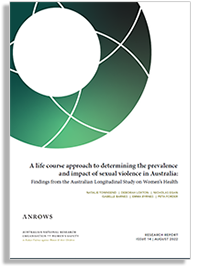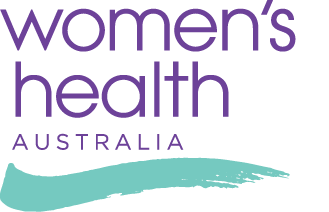A life course approach to determining the prevalence and impact of sexual violence in Australia: The Australian Longitudinal Study on Women’s Health
The project, funded by Australia’s National Research Organisation for Women’s Safety (ANROWS), takes a life course approach to determine the prevalence and impact of sexual violence among Australian women. This includes sexual violence experienced in both childhood and adulthood, both within and outside of intimate relationships. This report provides a comprehensive evidence base for government and other Australian decision-making bodies to develop recommendations for policy and service delivery. It gives recommendations for:
- the prevention of further disadvantage through economic distress
- reducing the risk of poor physical and mental health
- addressing dissatisfaction with health and other services
- priority groups where appropriate
- promotion of recovery from experiences of sexual violence.
The Hon. Amanda Rishworth, Minister for Social Services launches the ANROWS report at the Centre for Women’s Health Research in Newcastle.
How many Australian women have experienced sexual violence?
Report details
 The research assessed the economic, social, emotional and physical wellbeing of Australian women who have experienced sexual violence.
The research assessed the economic, social, emotional and physical wellbeing of Australian women who have experienced sexual violence.
Links between the experience of sexual violence and health service use were investigated using datasets from the Medicare Benefits Schedule (MBS) and the Pharmaceutical Benefits Scheme (PBS) which were paired with ALSWH participant data.

Executive summary 7
Background 7
Aims 7
Method 7
Results 8
Conclusion 9
Implications and recommendations for policy and practice 10
Directions for future research 10
Introduction 12
Literature review 12
Policy context: The National Plan to Reduce Violence Against Women and Their Children 2010–2022 20
Evidence gap 20
Aims of project 22
Methods 23
Study setting 23
Measures 23
Analysis strategy 30
Results 31
Chapter 1: Prevalence of sexual violence 31
Priority populations 35
Chapter 2: Sexual violence during childhood as a risk factor for further violence 39
Chapter 3: Lifetime sexual violence and economic factors
Chapter 4: Sexual violence and health behaviours 47
Chapter 5: Sexual violence and health 51
Chapter 6: Sexual violence and health services 54
Chapter 7: Wellbeing among women who have experienced sexual violence 63
Discussion 69
Prevalence of sexual violence 69
Sexual violence during childhood as a risk factor for further violence 71
Lifetime sexual violence and economic factors 71
Sexual violence and health behaviours 72
Sexual violence and health 72
Sexual violence and health services 72
Wellbeing among women who have experienced sexual violence 73
Strengths and limitations 74
Implications and recommendations for policy and practice 75
Directions for future research 76
Conclusion 78
 Suggested citation
Suggested citation
Townsend, N., Loxton, D., Egan, N., Barnes, I., Byrnes, E., & Forder, P. (2022). A life course approach to determining the prevalence and impact of sexual violence in Australia: Findings from the Australian Longitudinal Study on Women’s Health (Research report 14/2022). ANROWS.
ISBN
ISBN: 978-1-922645-45-6 (paperback) | 978-1-922645-46-3 (PDF)
95 pp.
 This report is part of a program of research led by ANROWS and funded by the Australian Government Department of Social Services under the Fourth Action Plan of the National Plan to Reduce Violence against Women and their Children 2010–2022.
This report is part of a program of research led by ANROWS and funded by the Australian Government Department of Social Services under the Fourth Action Plan of the National Plan to Reduce Violence against Women and their Children 2010–2022.

